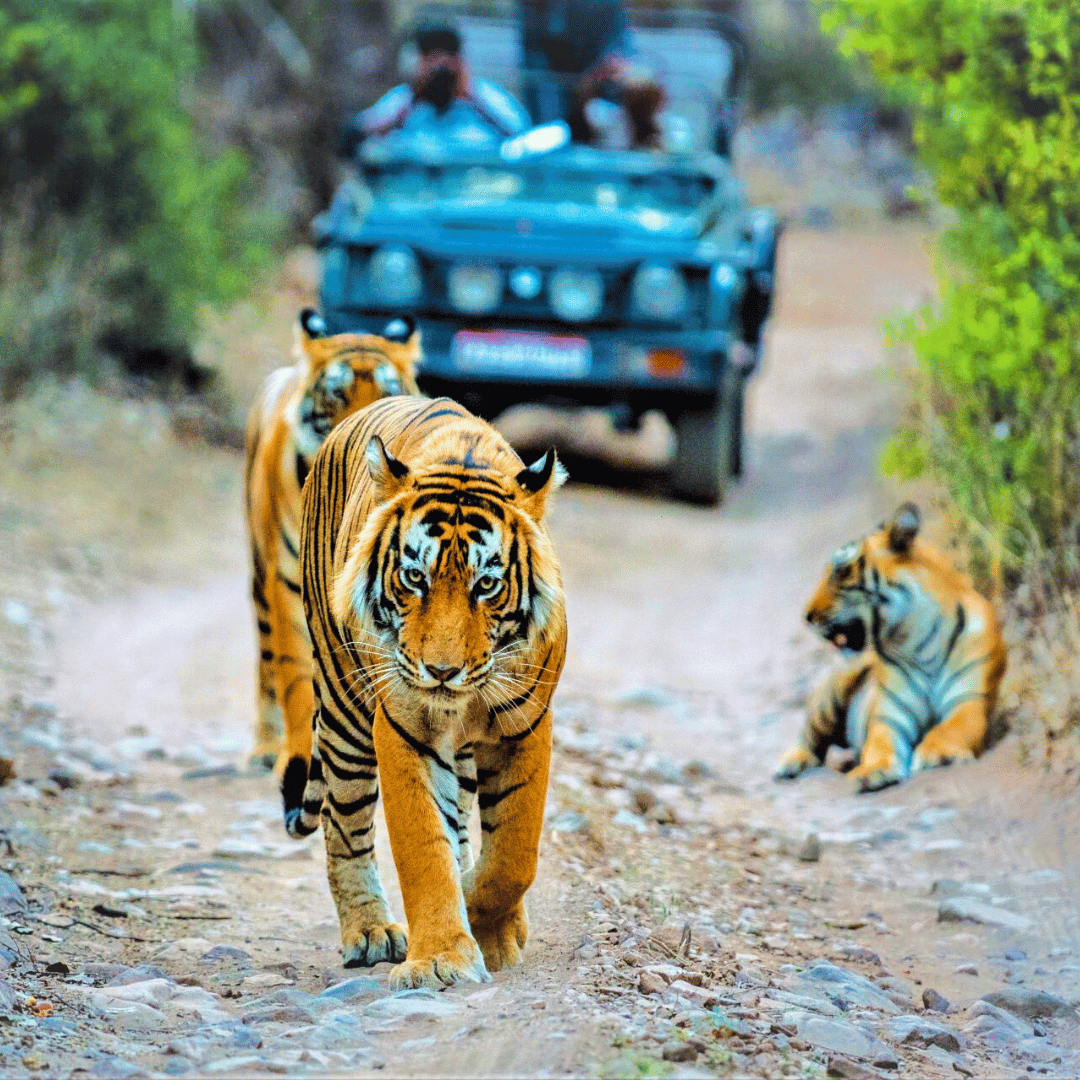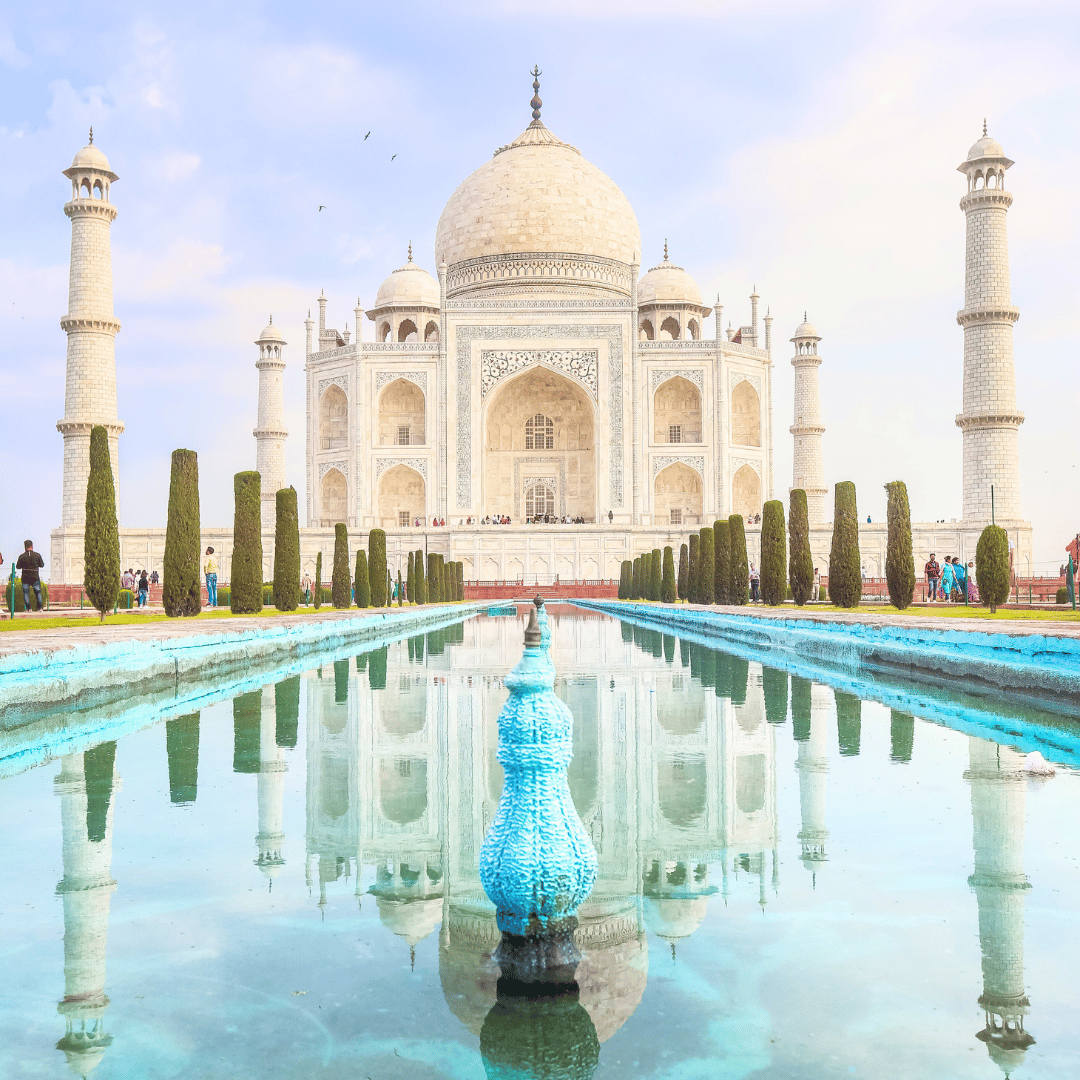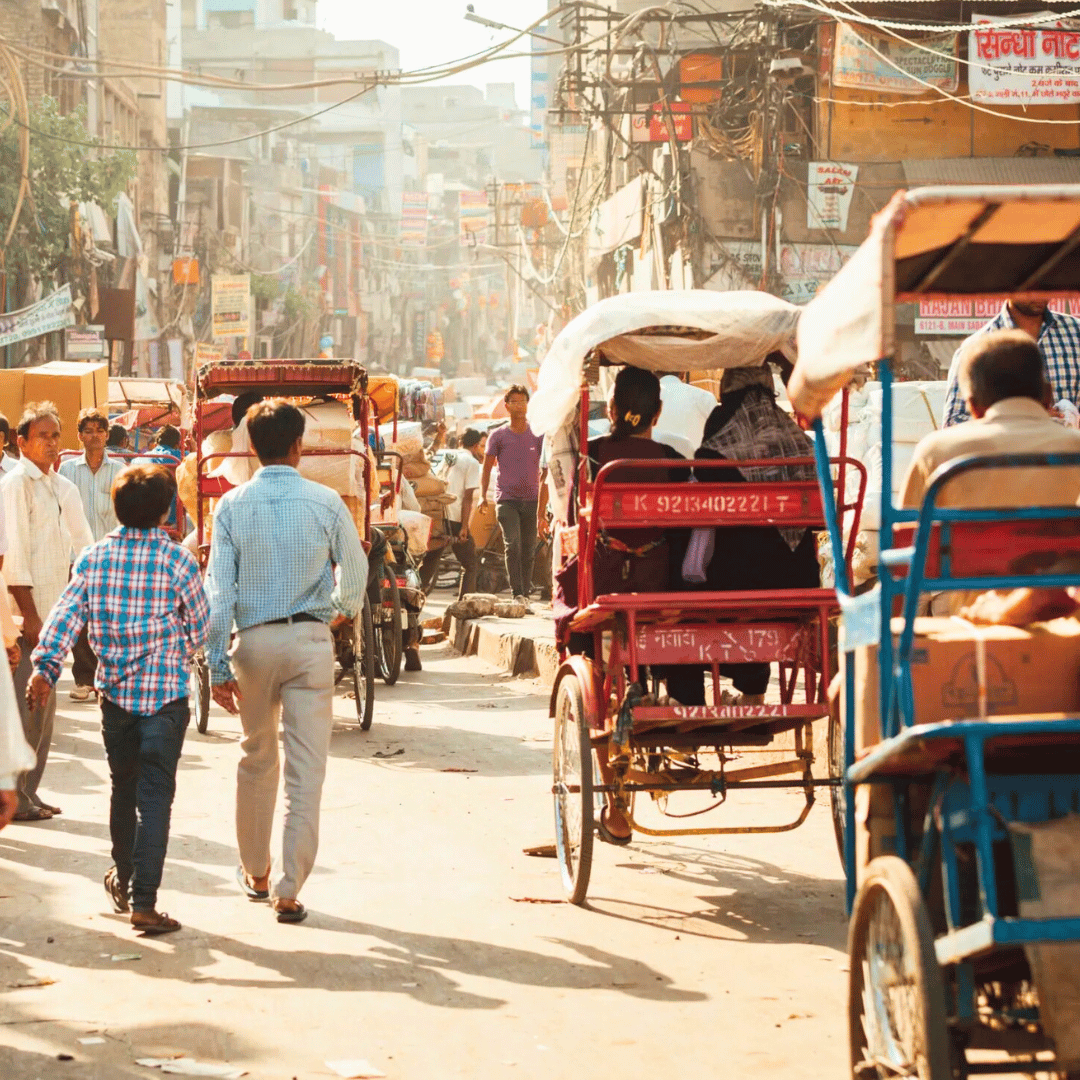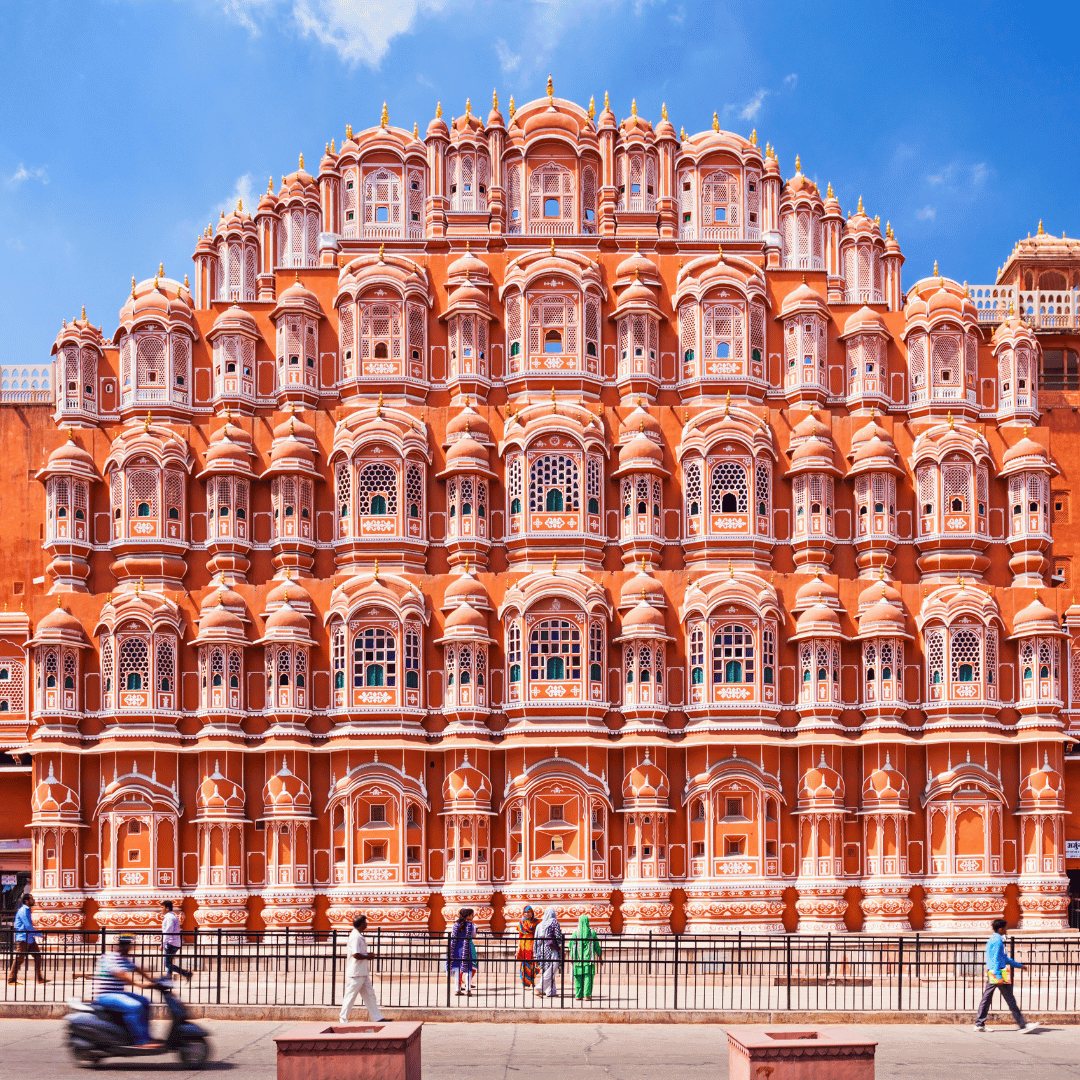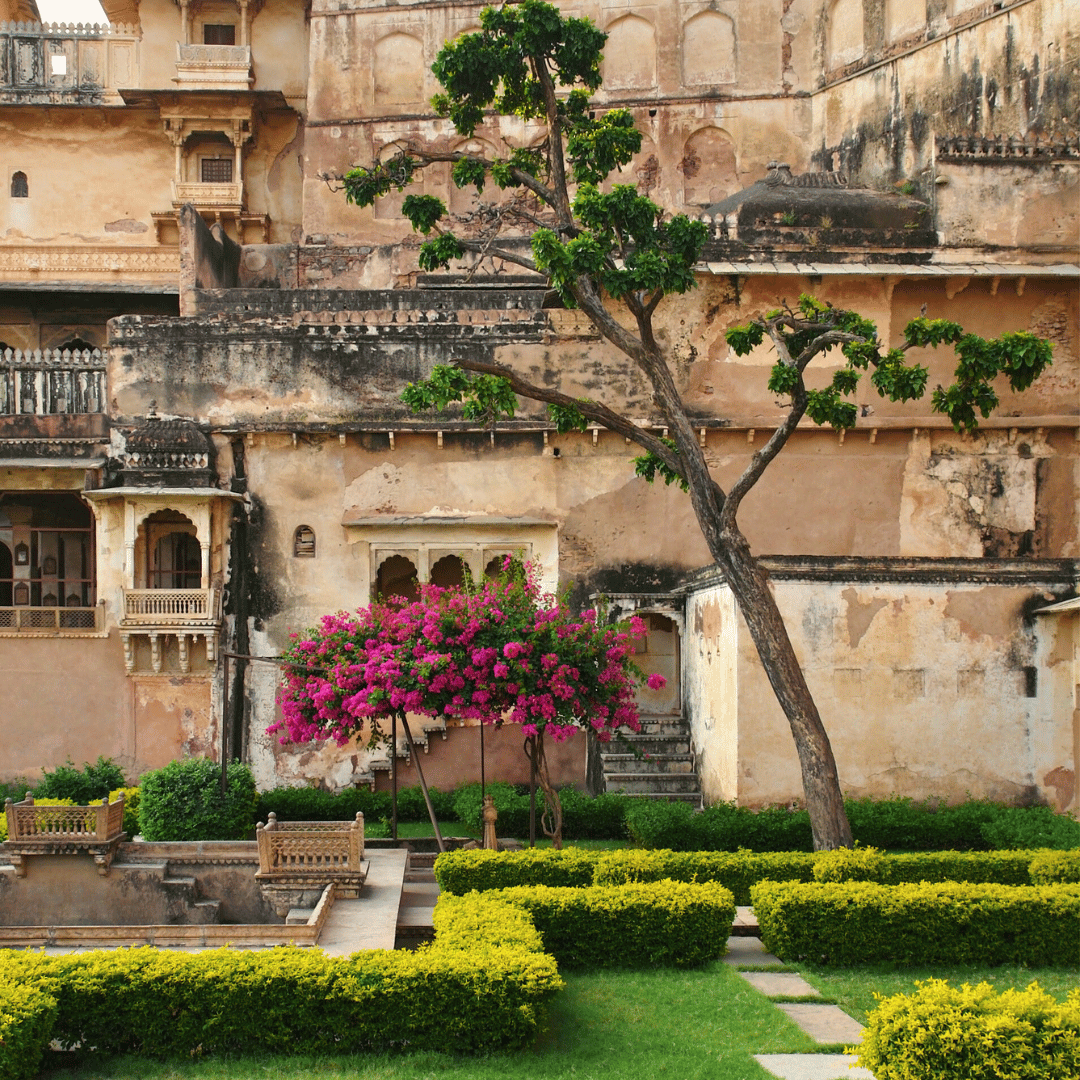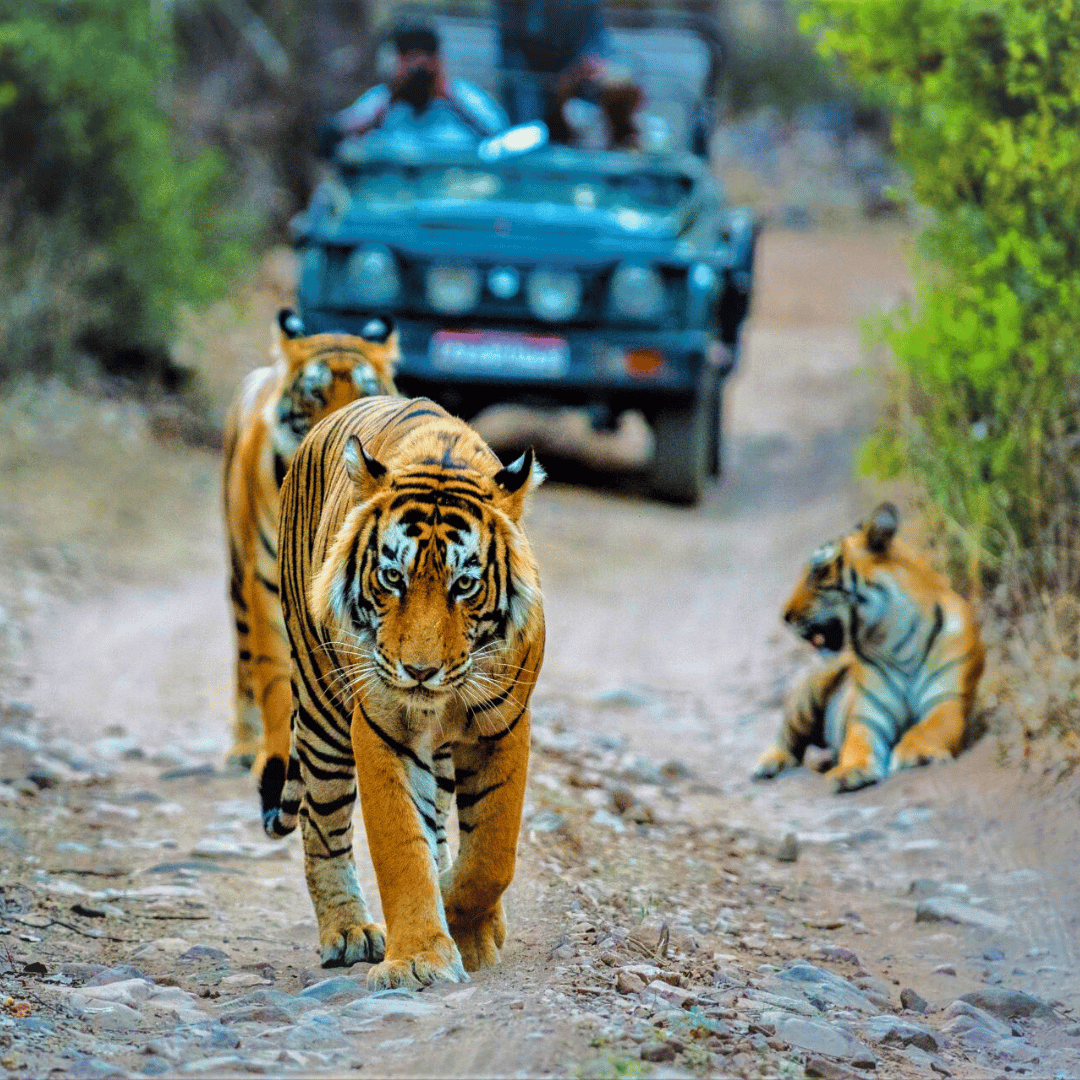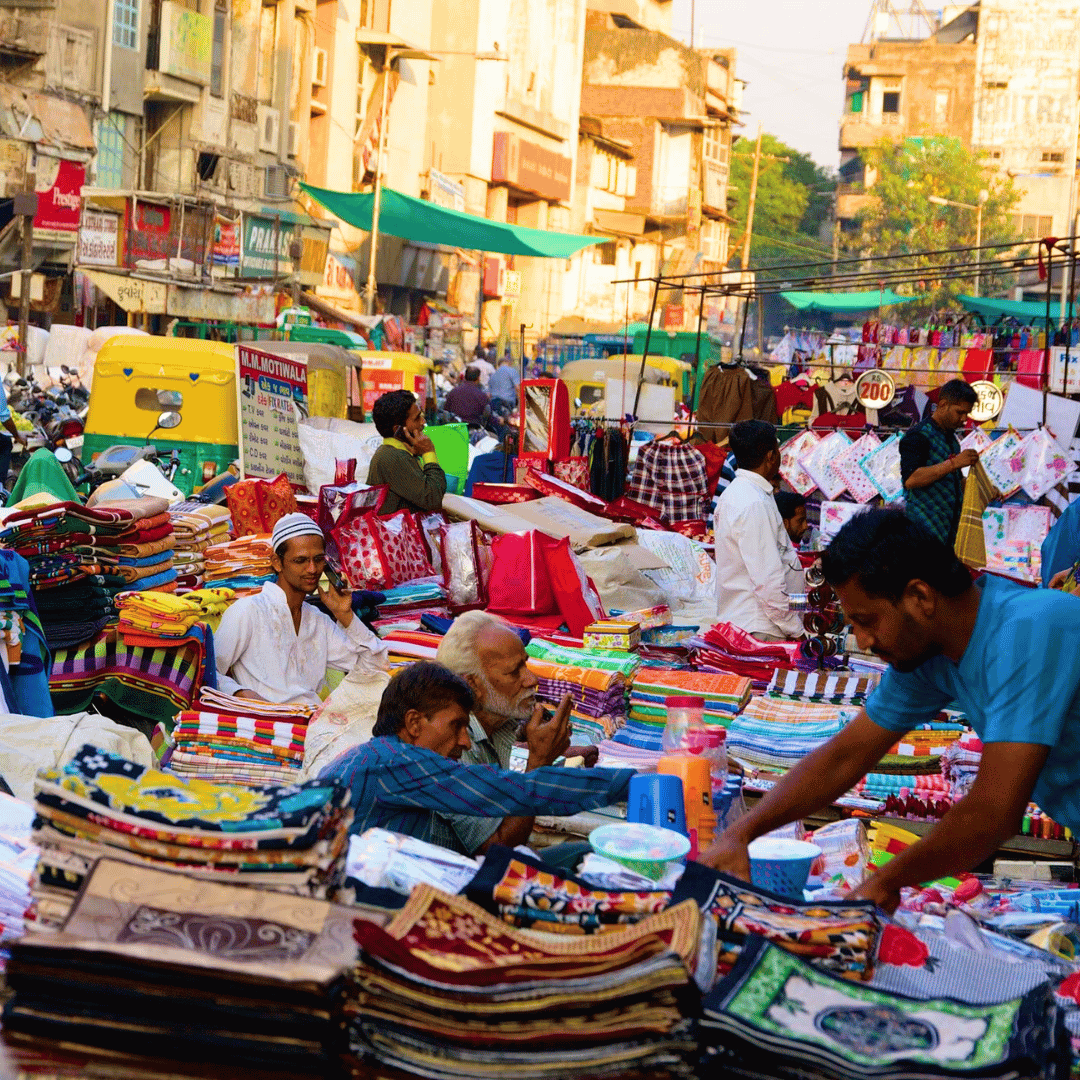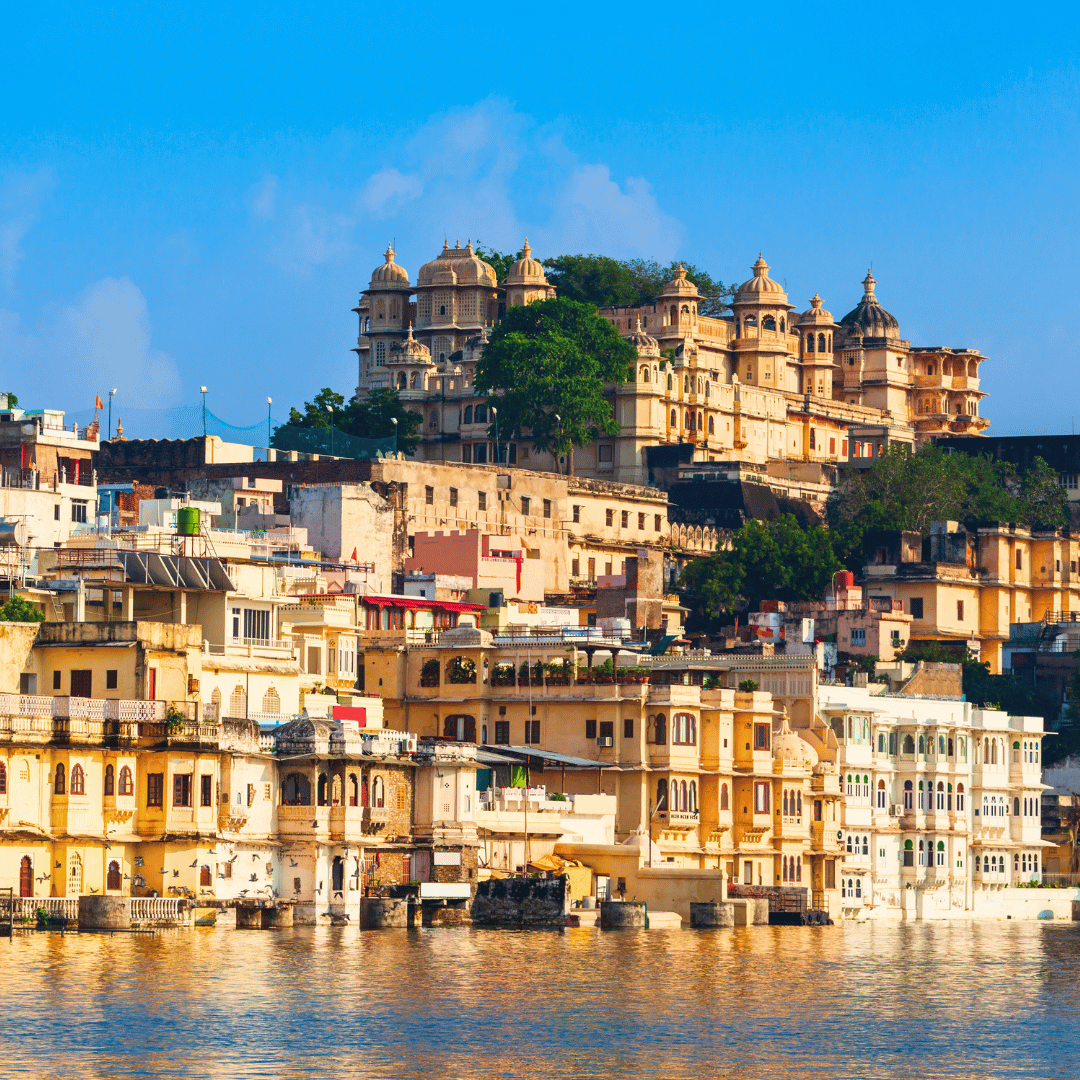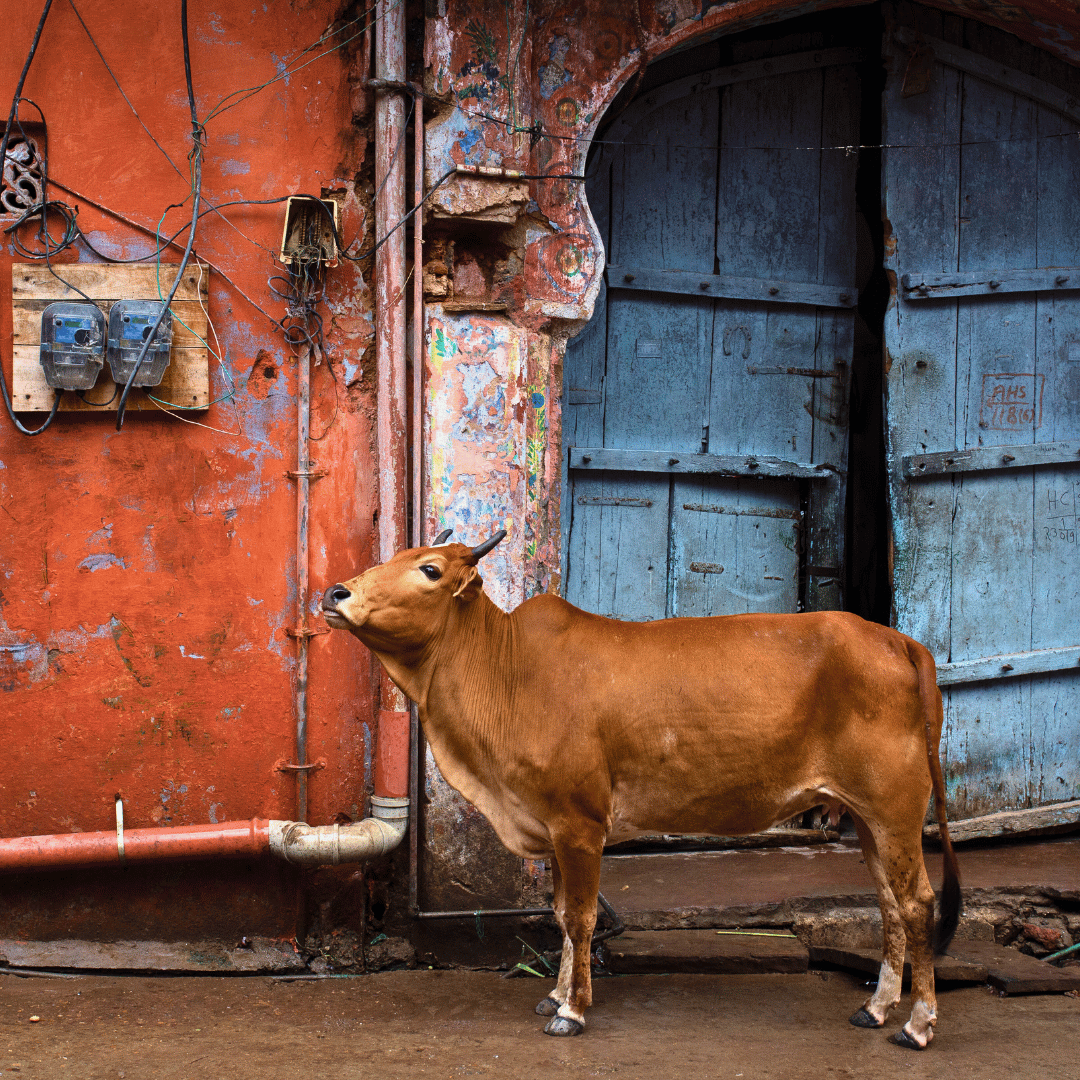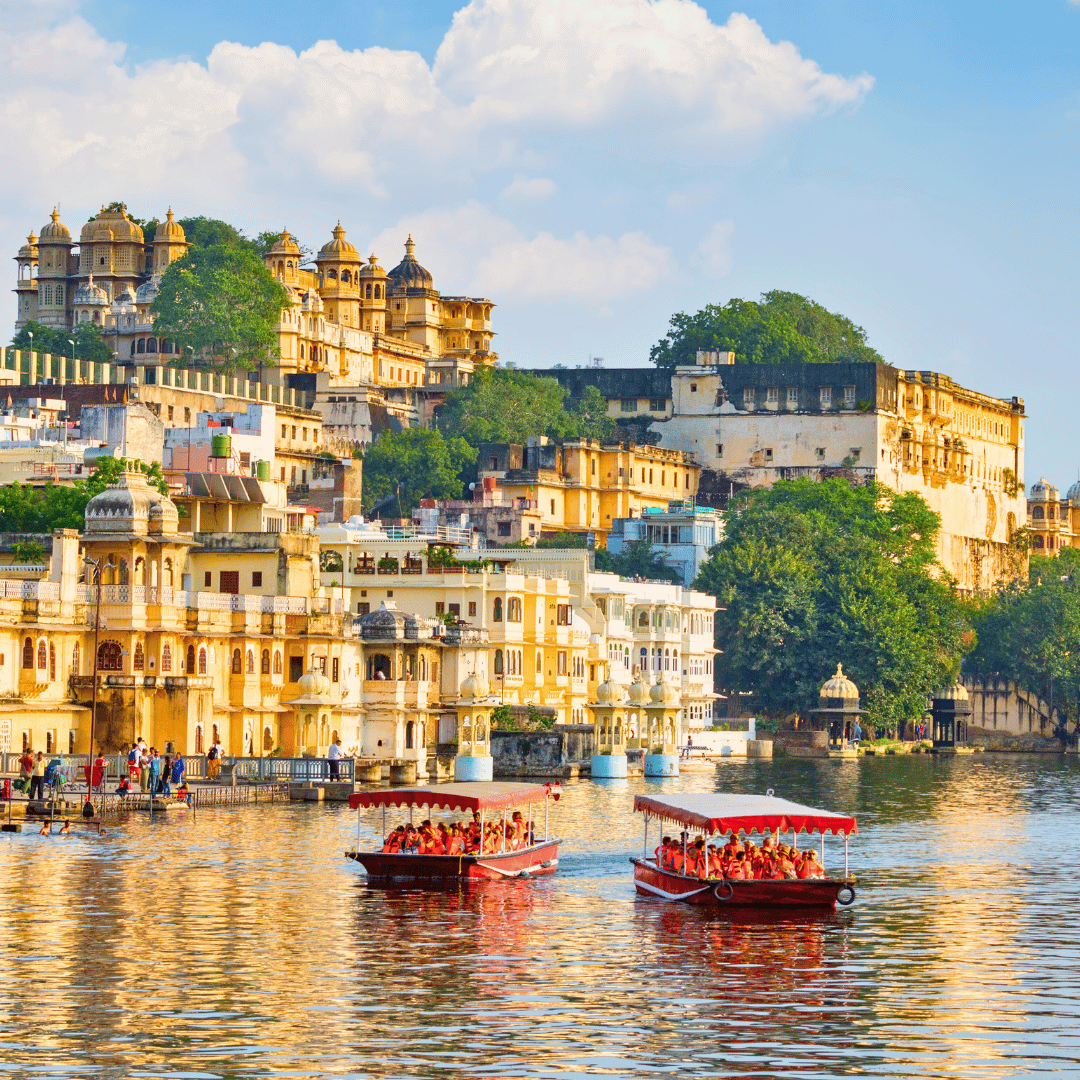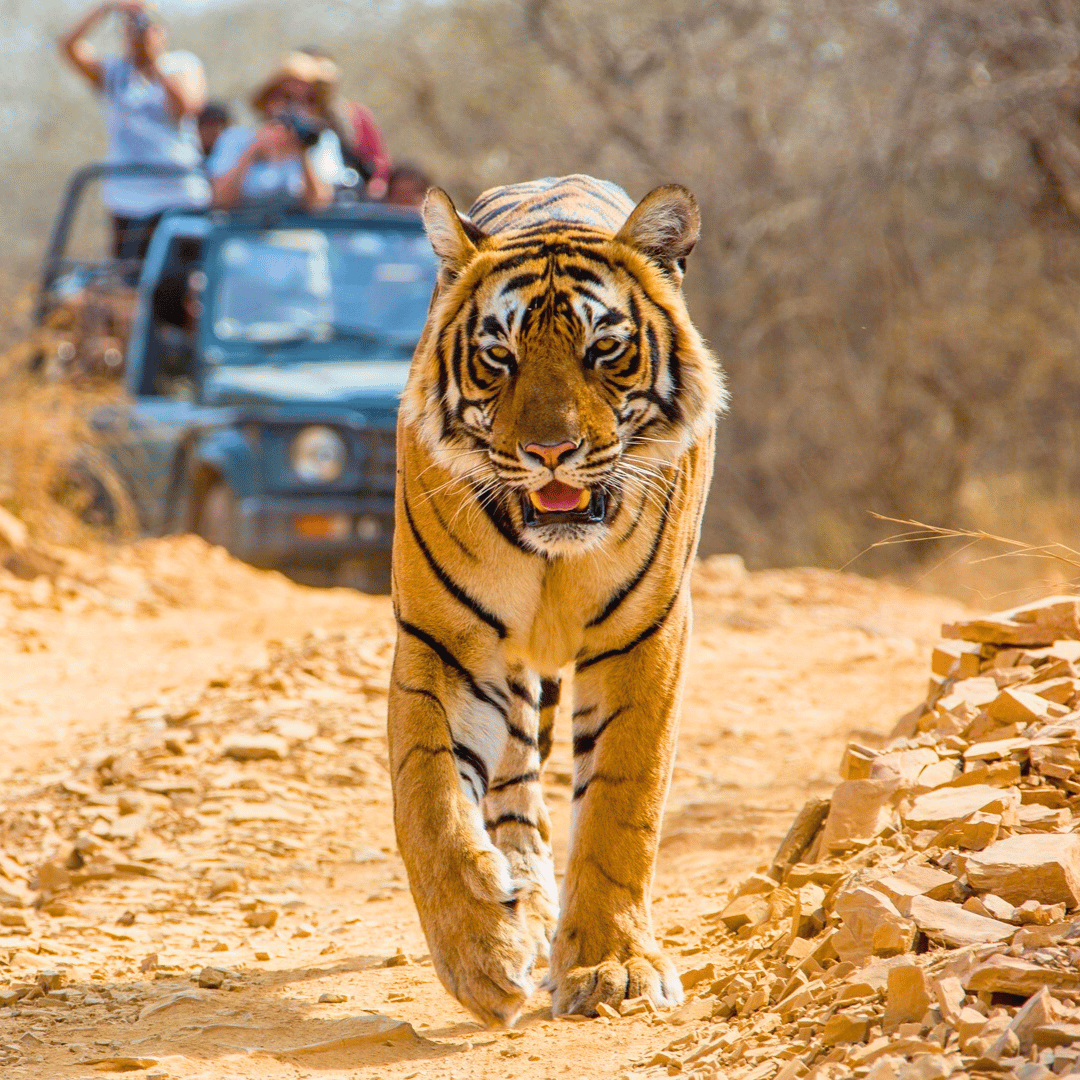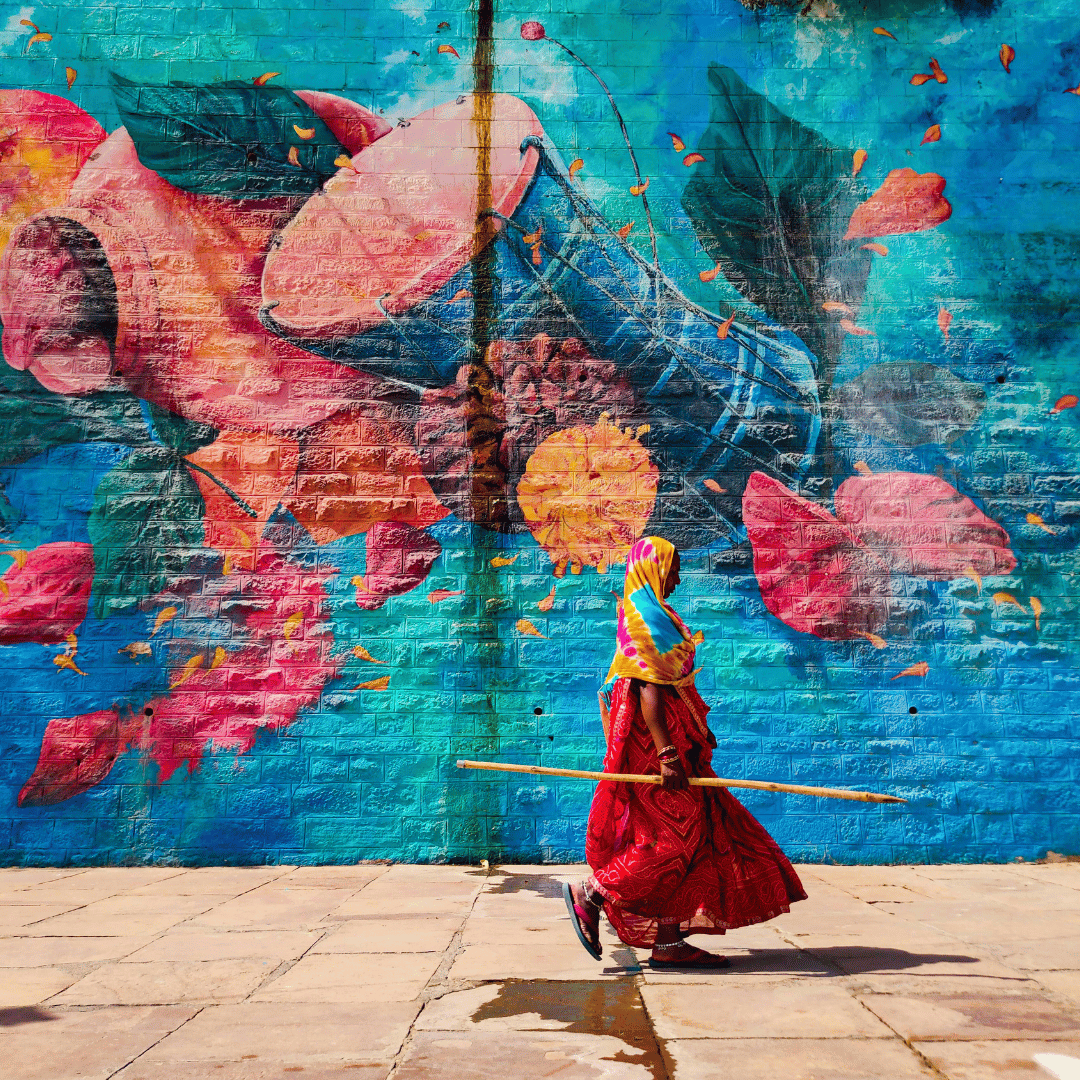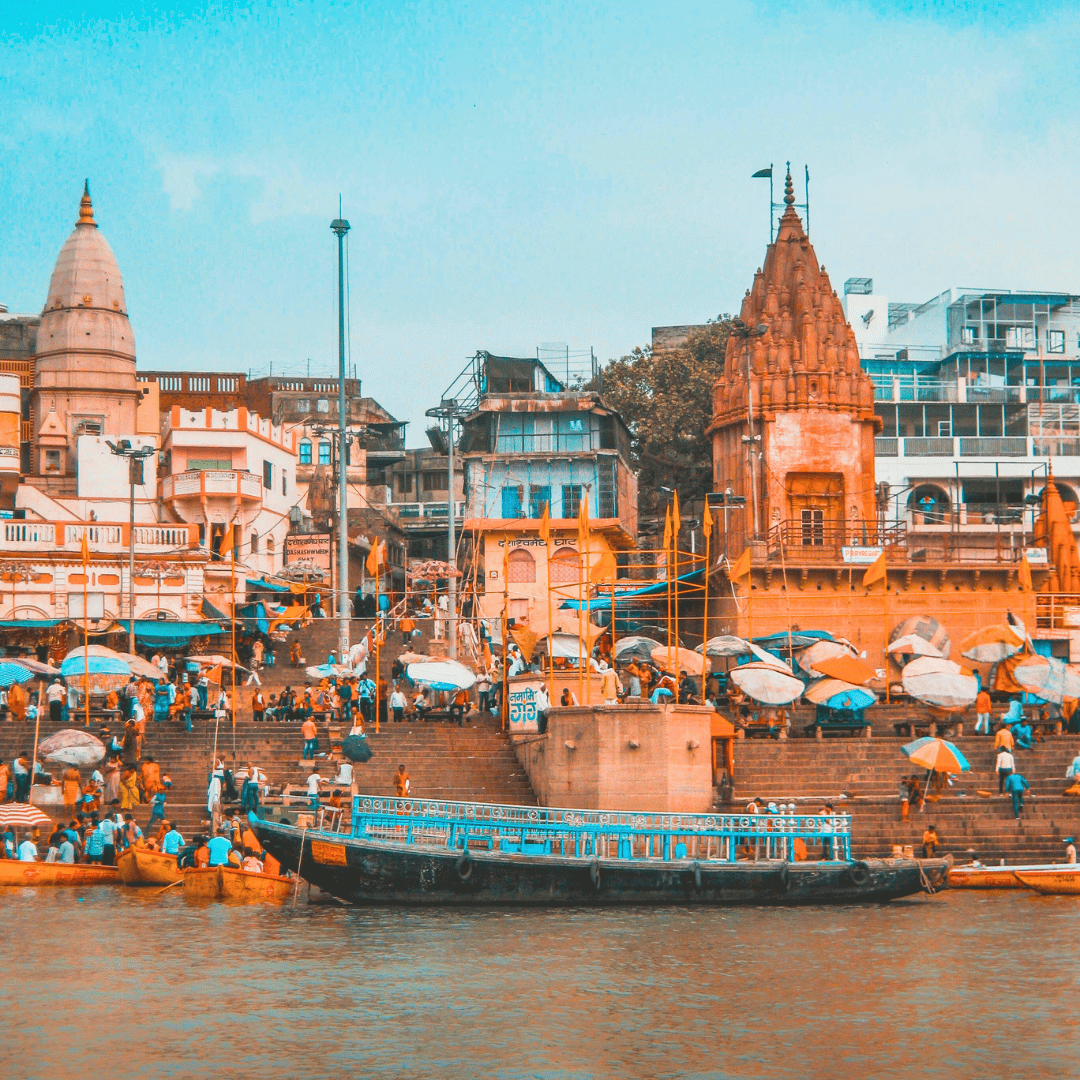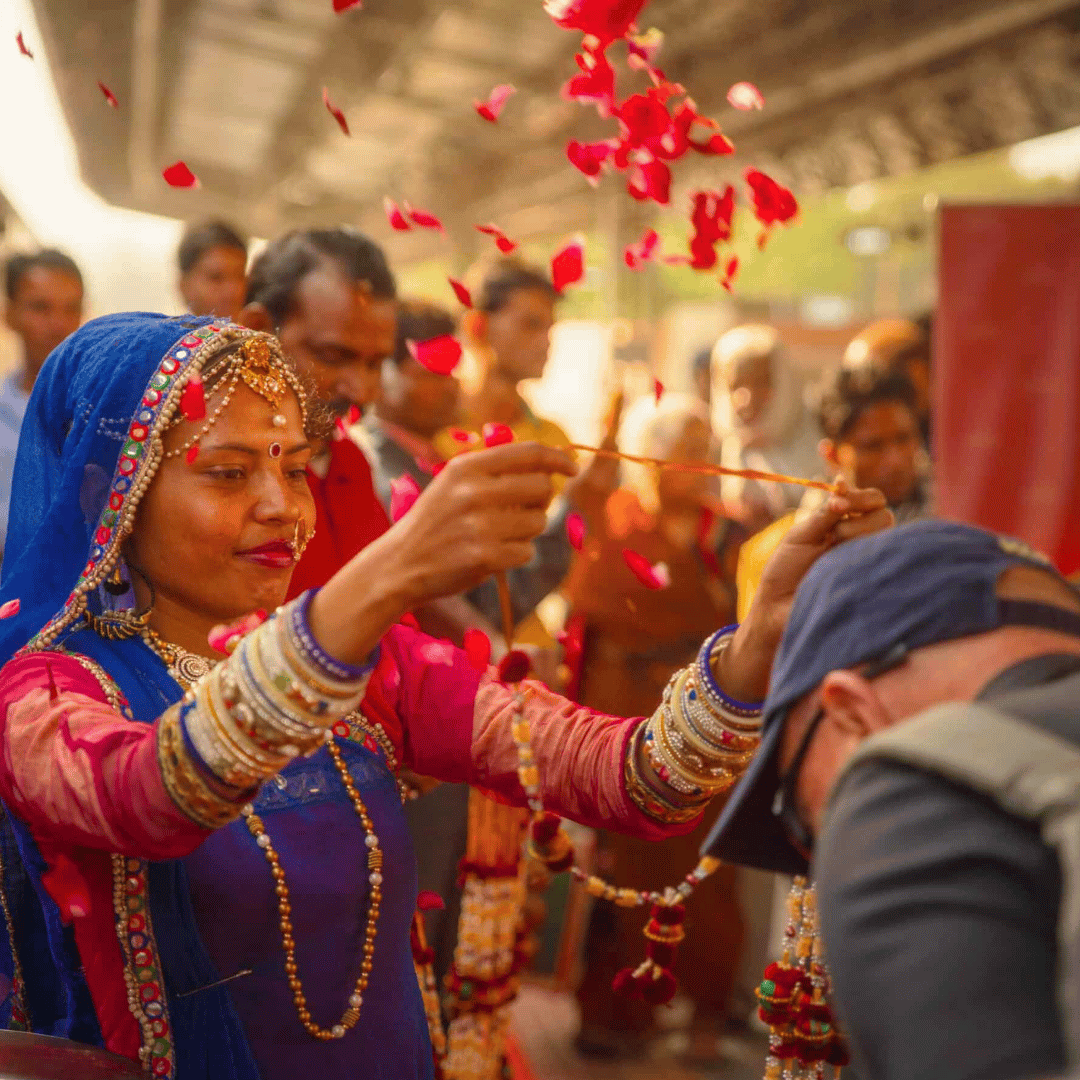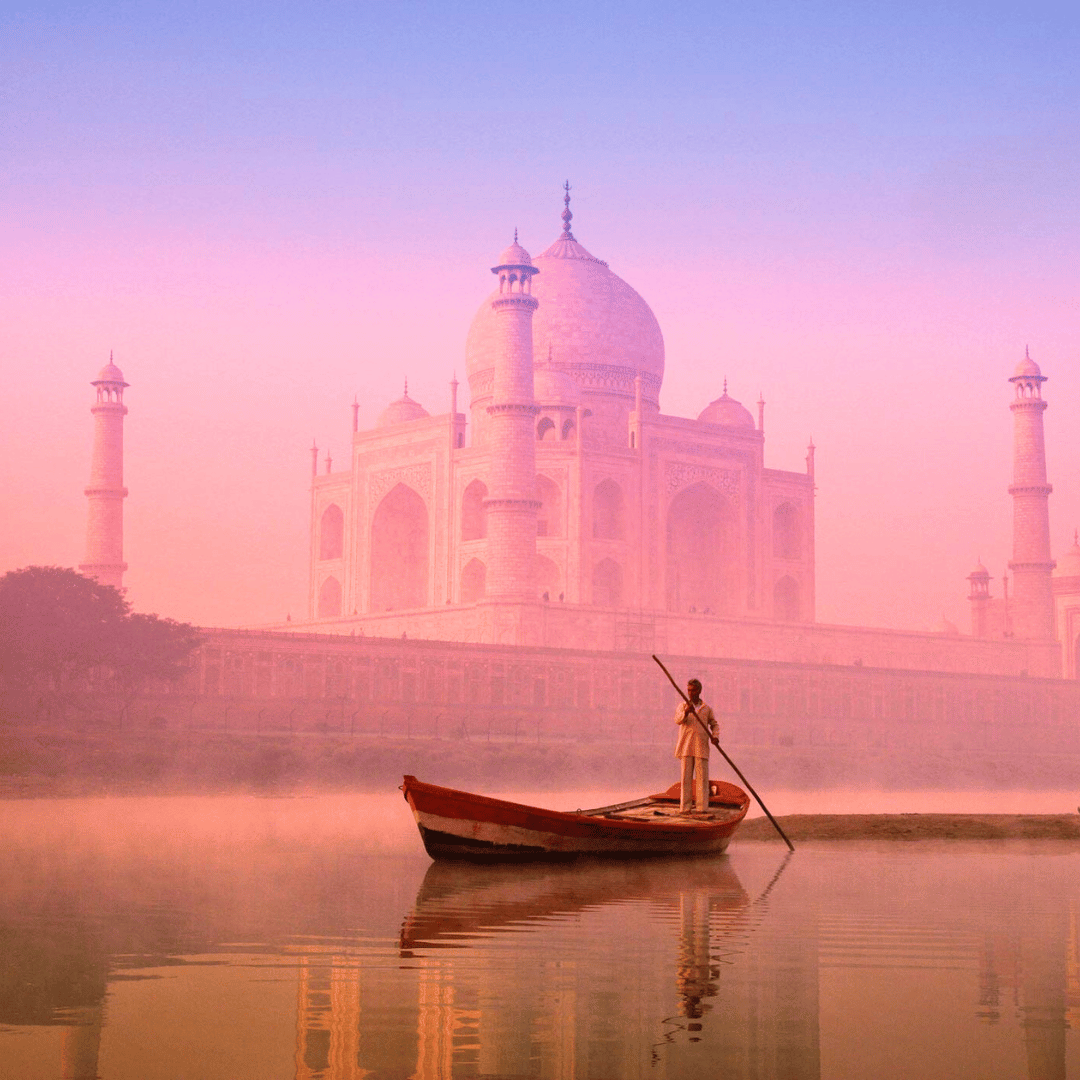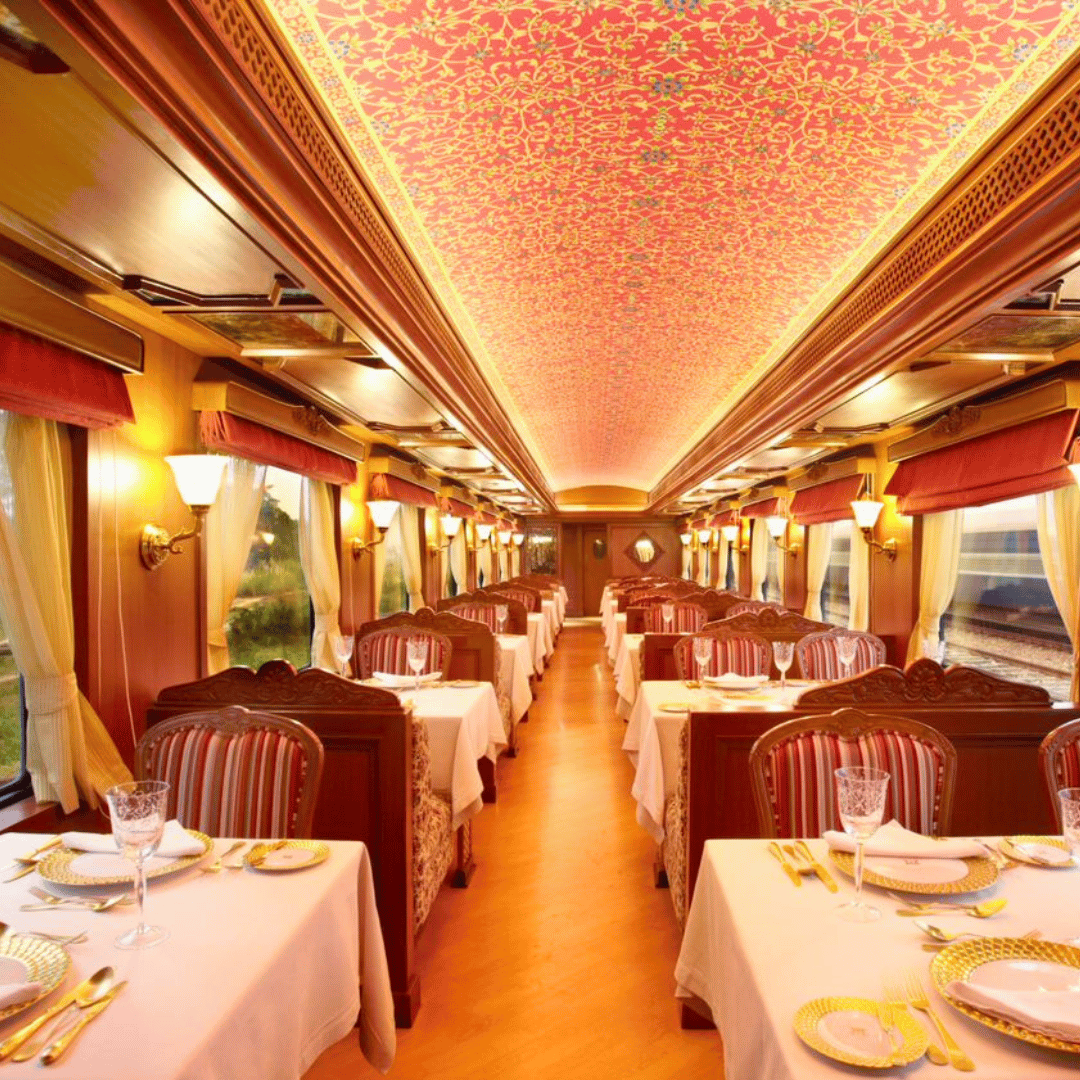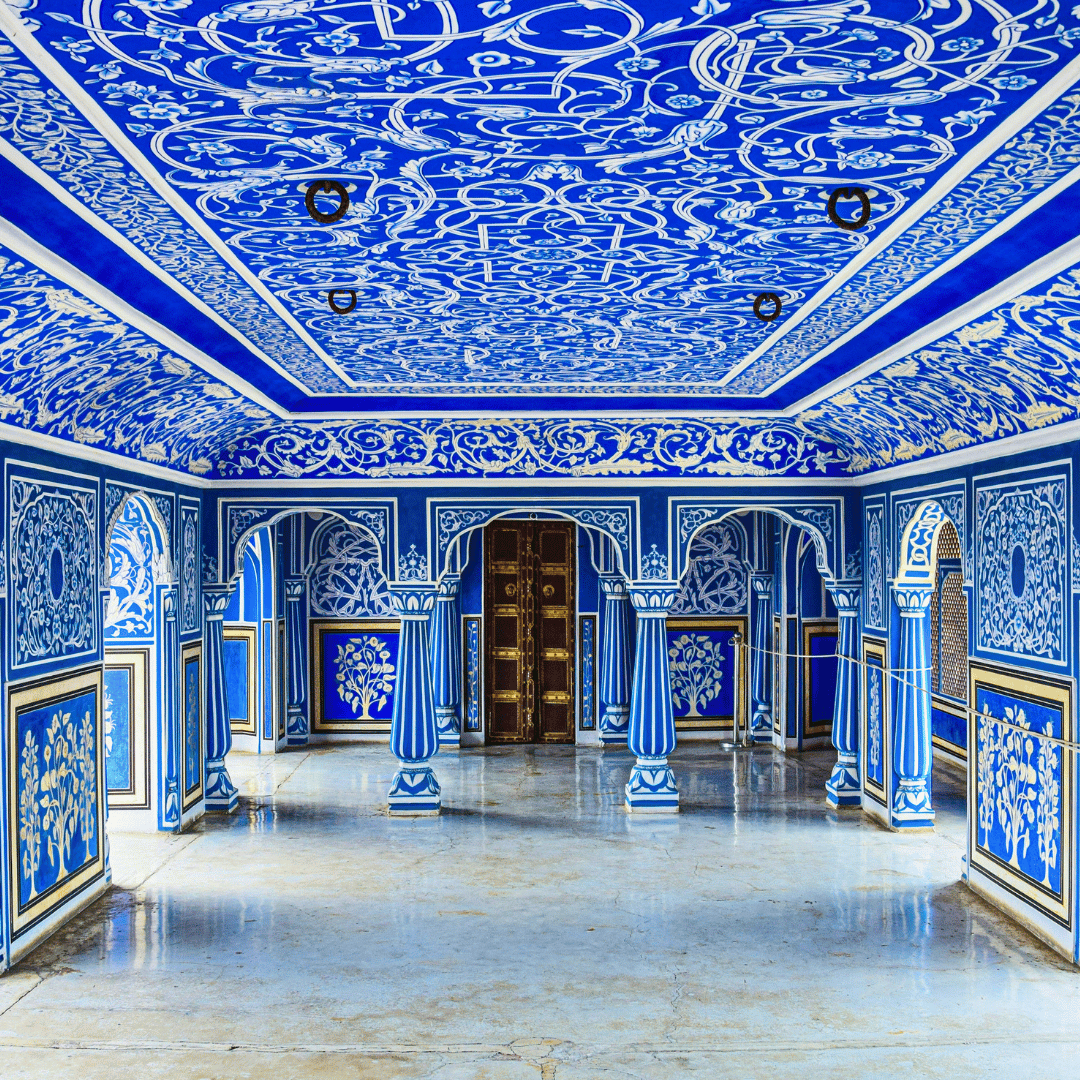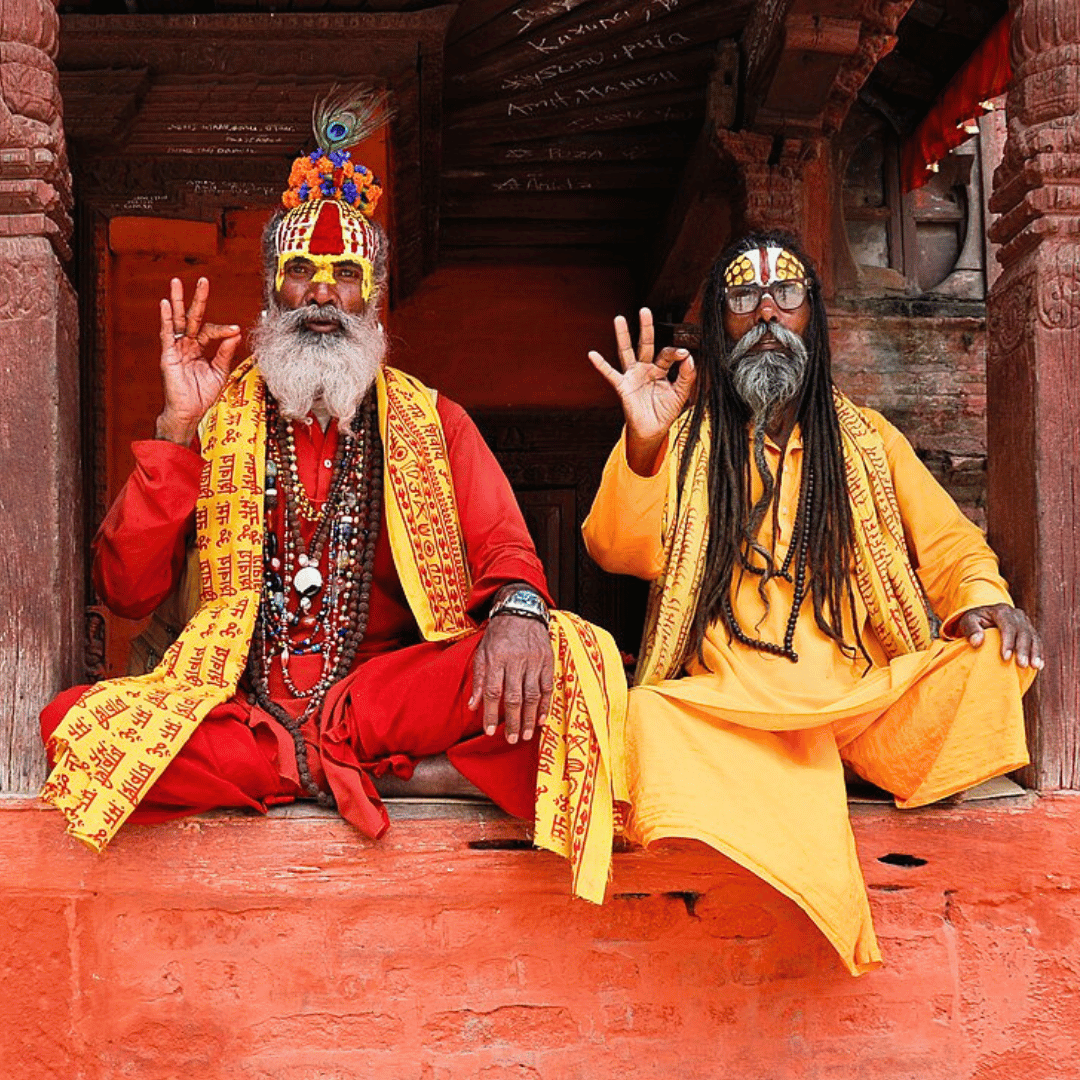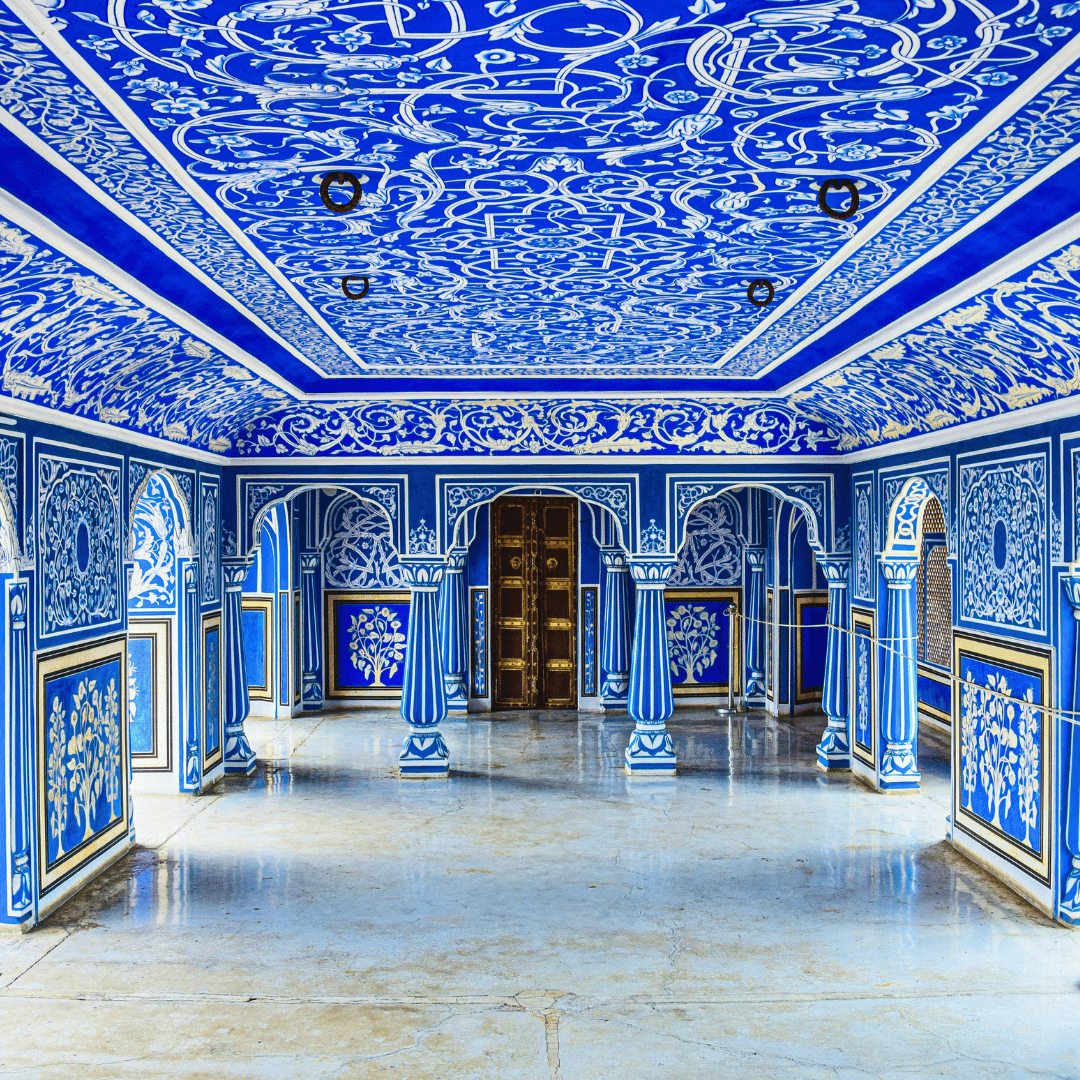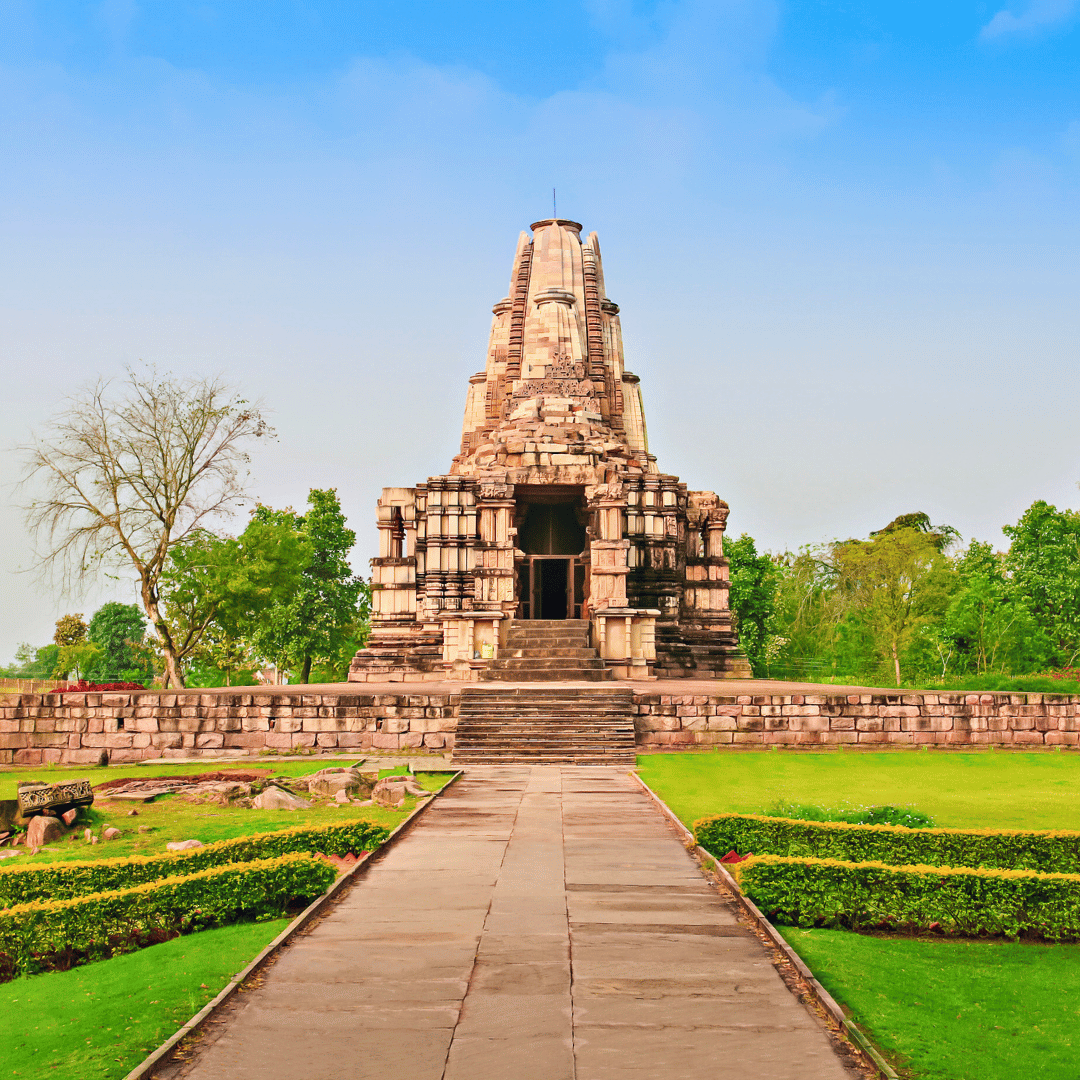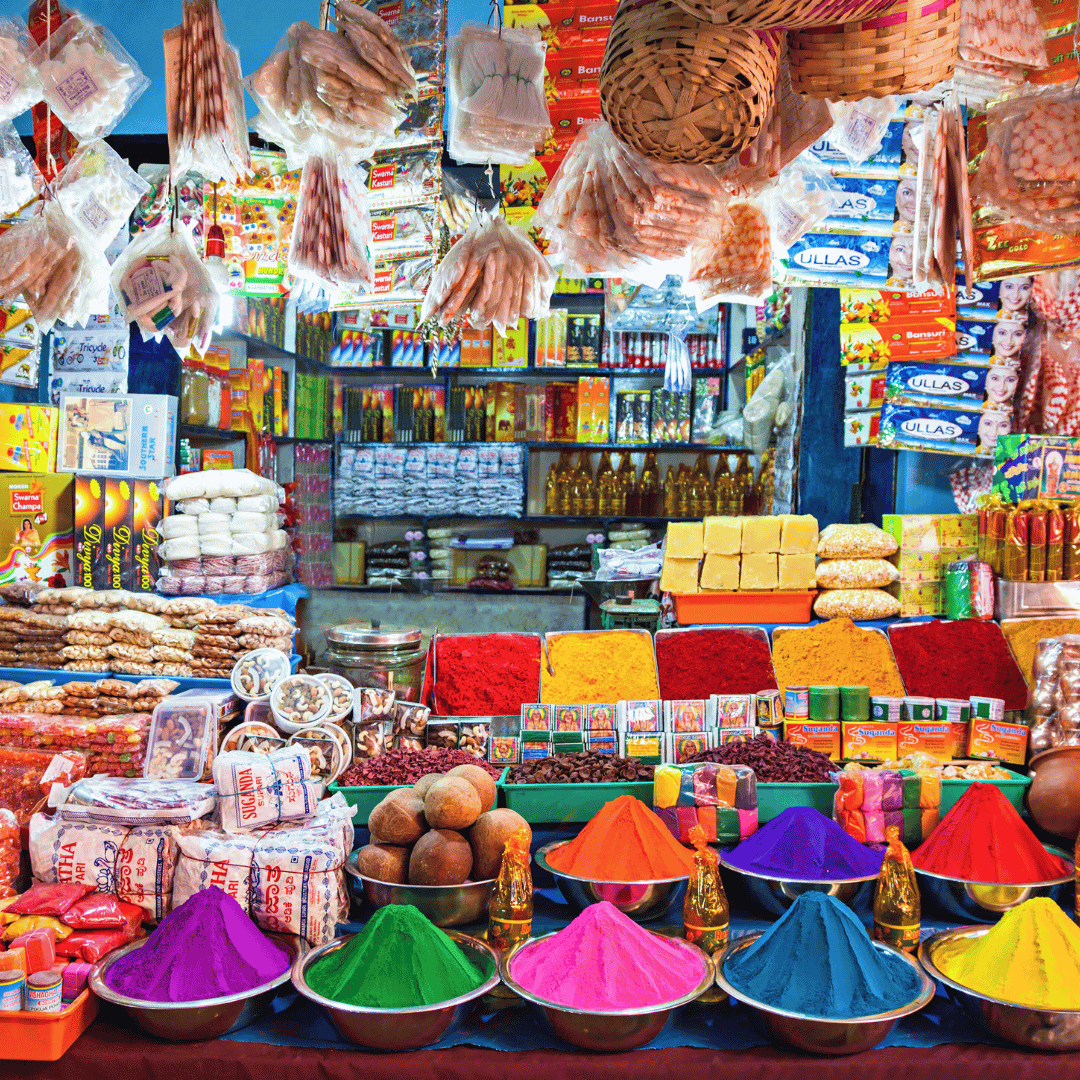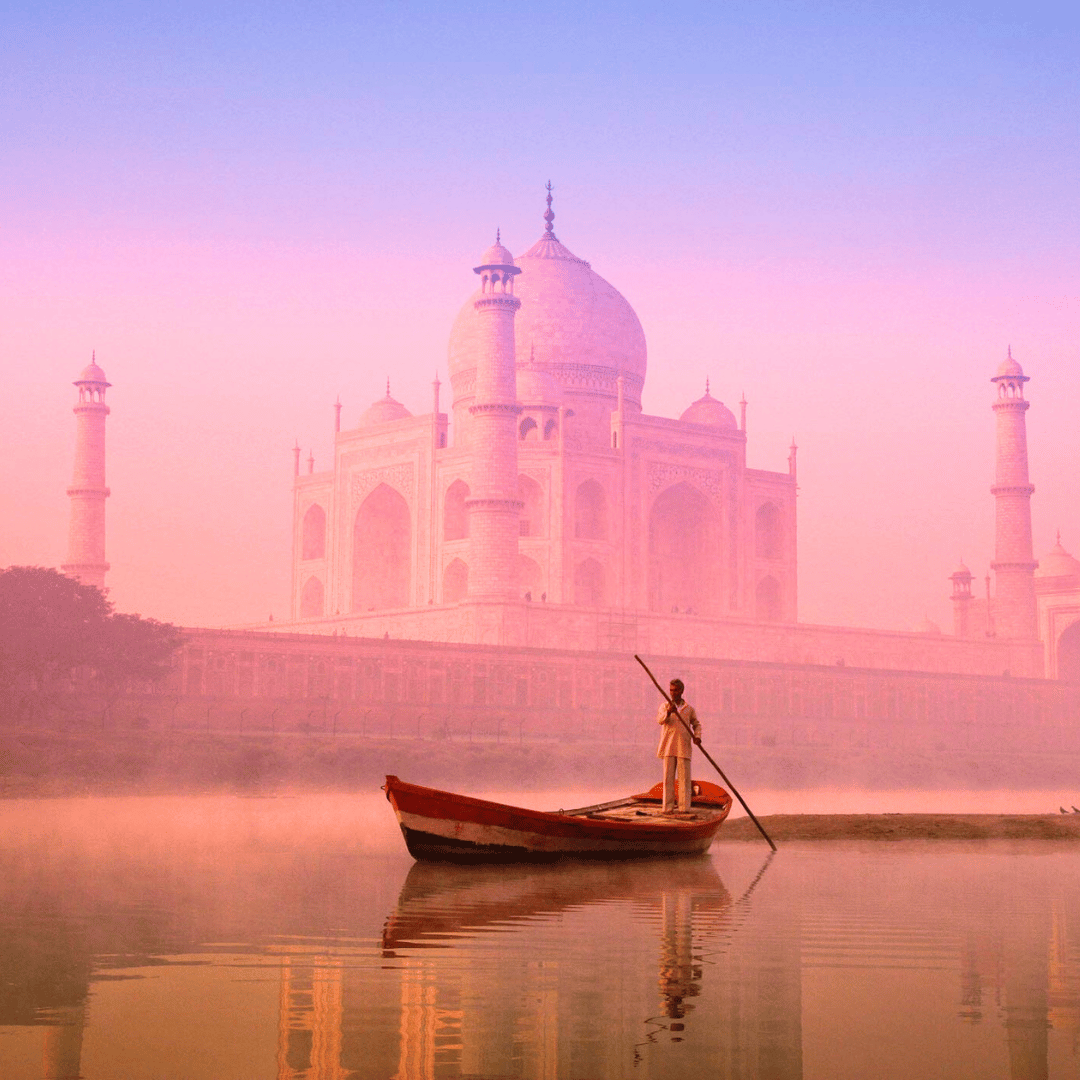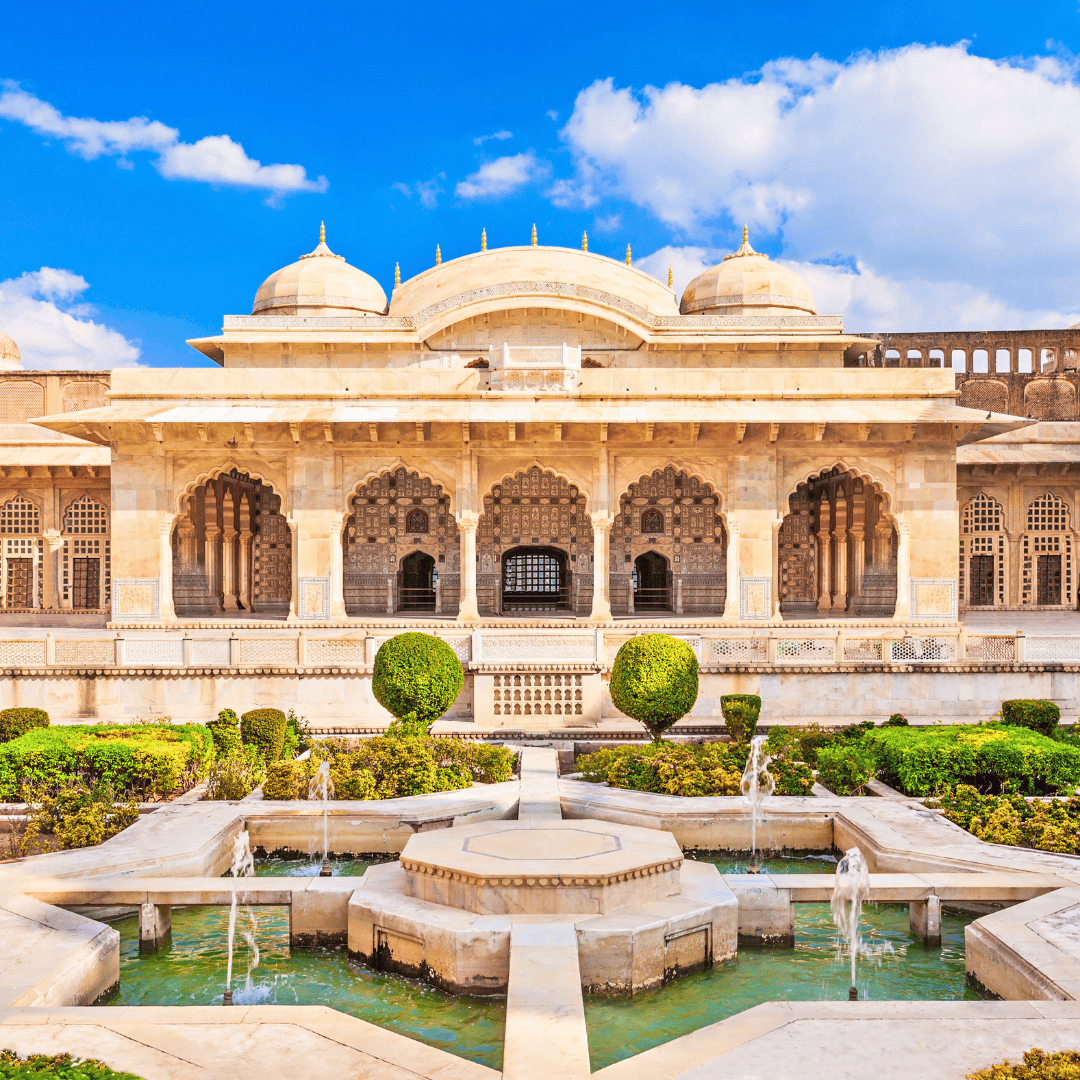Itinerary
-
Welcome to India! Delhi, the capital of India, is a city of contrasts and complexities, where history and modernity exist side by side. With a population of over 16 million, it is one of the fastest-growing cities in the world, a sprawling metropolis that is both dynamic and deeply rooted in tradition.
A place of endless movement and diversity, Delhi’s streets are filled with a mix of old and new, from historic architecture to contemporary developments. It is a city of grand avenues and narrow alleyways, towering skyscrapers and ancient monuments, where different cultures, languages, and traditions converge. Bustling with life, it is a place of constant change, yet its past remains ever-present in its landscape and character.
On arrival, you will be met at the airport and transferred to your hotel, where you can unwind and take in the energy of this ever-evolving capital.
-
Spend today exploring Delhi with a local guide, taking in the city’s rich history, vibrant culture, and striking contrasts. With its vast scale and countless landmarks, it would be impossible to see everything in a day, but your tour will provide a broad and immersive introduction to both Old and New Delhi - two distinct halves of the capital that together reflect India’s past and present.
Start in Old Delhi, where centuries-old monuments stand alongside bustling bazaars and modern commerce. Navigate the narrow, winding streets of Chandni Chowk, one of Delhi’s oldest and busiest markets, where rickshaws weave through crowds of shoppers, and the air is filled with the aroma of spices and street food. Visit the imposing Jama Masjid, India’s largest mosque, built by Mughal Emperor Shah Jahan in the 17th century, and climb one of its minarets for a panoramic view of the city’s rooftops. Drive past the Red Fort, a UNESCO-listed masterpiece that once served as the seat of Mughal power.
Continue to New Delhi, a stark contrast to the bustling chaos of Old Delhi, with its wide tree-lined avenues, grand colonial buildings, and spacious public squares. Designed by British architect Edwin Lutyens in the early 20th century, New Delhi was built as the imperial capital of British India and remains the political heart of the country today. Drive past India Gate, a towering war memorial, and Rashtrapati Bhavan (the President’s House), an architectural blend of Western classical and Indian influences.
Visit Humayun’s Tomb, an exquisite 16th-century Mughal mausoleum that inspired the design of the Taj Mahal, and explore the towering Qutab Minar, a 12th-century victory tower that marks the arrival of Islamic rule in India. If time allows, stop at Gurudwara Bangla Sahib, a beautiful Sikh temple where the sound of devotional hymns and the sight of volunteers preparing meals in the community kitchen offer a peaceful retreat from the city’s energy.
Your day in Delhi will leave you with a deeper appreciation of its diversity, layered history, and vibrant rhythm, making it the perfect starting point for your journey through India.
-
Transfer to the railway station this morning to board your train to Sawai Madhopur, the closest rail link to Ranthambhore National Park. Travelling by train in India offers a glimpse into everyday life, as the journey takes you through rural landscapes, small villages, and bustling station platforms. On arrival, you will be met and driven to your accommodation, where you can settle in before the afternoon’s activities.
After lunch, set out on a walk to Ranthambhore Fort, a 10th-century hilltop stronghold that offers a fascinating insight into the region’s history. Perched high on a cliff within the national park, the fort was once a strategic Rajput bastion, resisting repeated invasions from Delhi’s Sultanate and Mughal rulers.
As you explore its expansive ruins, discover ornate palaces, ancient step wells, and crumbling pavilions, all whispering stories of the fort’s royal and military past. One of the fort’s most significant landmarks is the Ganesha Temple, which remains an active place of worship, drawing pilgrims from across Rajasthan who come to offer prayers and sweets to the elephant-headed deity.
From the fort’s ramparts, enjoy spectacular views over Ranthambhore’s rugged landscape, with its dense forests, rolling hills, and open grasslands - home to the elusive Bengal tiger and other wildlife. As the afternoon light fades, the setting sun casts a golden glow over the park, making this the perfect introduction to Ranthambhore’s blend of history and nature.
-
This morning, set out on an excursion to Soorwal Dam, located 7 kilometres from Ranthambhore, for a morning of birdwatching.
Nestled amidst open grasslands and agricultural fields, Soorwal Dam is a seasonal wetland that attracts a diverse range of migratory and resident bird species, particularly in the winter months. The calm waters and surrounding vegetation provide an ideal habitat for painted storks, spoonbills, herons, kingfishers, sandpipers, and egrets. Lucky visitors may even spot sarus cranes, India’s tallest flying birds, or flocks of bar-headed geese, known for their extraordinary migration over the Himalayas. With the soft morning light reflecting off the water, this is a peaceful and rewarding experience for both keen birdwatchers and casual nature enthusiasts.
Afterwards, return to your hotel for breakfast and a relaxed morning before heading out to visit the Dastkar Ranthambhore Crafts Centre, a community-led initiative that empowers local women through traditional handicrafts.
This inspiring project, located in a small village near the national park, was founded to provide sustainable employment opportunities for women from rural communities who were previously reliant on seasonal farming or daily wage labour. The centre trains artisans in patchwork quilting, appliqué, block printing, and embroidery, helping to revive traditional Rajasthani textile techniques while creating beautiful, high-quality handcrafted products.
Visitors can observe the intricate craftsmanship firsthand, meet the artisans, and browse a range of handmade quilts, cushion covers, bags, and garments, all available at reasonable prices. Every purchase directly supports women’s economic independence and community development, making this a worthwhile and meaningful visit.
After exploring the Dastkar Crafts Centre, return to your accommodation, where the remainder of the day is at leisure, allowing you to relax or explore the natural beauty of Ranthambhore at your own pace.
-
Set off on a scenic five-and-a-half-hour drive to Amanbagh, a secluded retreat nestled in Rajasthan’s Alwar region. As you travel through the rugged landscape of sandy plains and craggy hills, the journey offers glimpses of rural life, from traditional villages to nomadic herders tending their livestock. The dry, dramatic terrain of this part of Rajasthan reflects its historic past, where ancient forts and palaces stand as remnants of a royal legacy.
In striking contrast to its surroundings, Amanbagh is a lush oasis of greenery, enclosed within a grand walled compound. Towering palm trees, fragrant eucalyptus, and fruit orchards create an atmosphere of serenity, making it a perfect escape from the arid expanse beyond. Once the site of royal hunting expeditions, this former Mughal encampment has been transformed into a luxurious retreat that pays homage to its regal past. Designed in the style of a modern-day Mughal palace, Amanbagh blends traditional elegance with contemporary comfort. Its suites and pavilions, featuring domed cupolas, intricately carved sandstone, and spacious private courtyards, reflect the architectural grandeur of the Mughal era. The interiors are adorned with rich textiles, handcrafted furnishings, and high vaulted ceilings, creating an ambience of refined luxury.
Upon arrival, take time to explore the resort’s tranquil grounds, unwind by the pool, or enjoy a refreshing welcome drink as you settle into your palatial surroundings. Whether admiring the intricate design details, indulging in a wellness treatment, or simply relaxing amidst the peaceful gardens, Amanbagh offers an experience of royal indulgence in the heart of Rajasthan.
-
Depart Ranthambhore this morning for the three-hour drive to Jaipur, the vibrant capital of Rajasthan, set against a backdrop of rugged hills crowned with imposing forts. Known as the ‘Pink City’ for its distinctive rose-hued buildings, Jaipur is one of India’s most captivating destinations, offering a blend of royal grandeur, lively markets, and architectural marvels.
Founded in 1727 by Maharaja Jai Singh II, Jaipur is a city of palaces, gardens, temples, and bustling bazaars, enclosed by massive embattled walls that once protected it from invaders. The city’s layout was carefully planned, following ancient Hindu architectural principles, making it one of India’s first planned cities. Today, it remains a cultural and economic hub, where heritage and modernity coexist.
Jaipur’s markets and artisan workshops are among the best in India, offering an incredible variety of handcrafted goods. Wander through the bustling bazaars and you’ll find everything from gemstones, silver jewellery, and intricate enamel work to brassware, hand-block printed fabrics, blue pottery, embroidered leather footwear, and fine wool rugs. The city is also famous for its richly woven saris, textiles, and decorative homewares, many of which are crafted using traditional techniques passed down through generations.
With its impressive forts, lavish palaces, colourful markets, and vibrant culture, Jaipur deserves at least three to four days to fully appreciate its heritage and local life. Whether exploring its historical treasures, experiencing its artisanal traditions, or simply soaking in the lively atmosphere, Jaipur offers a memorable introduction to Rajasthan’s royal legacy.
-
Spend the morning exploring Jaipur with a local guide, discovering the city’s royal heritage, scientific achievements, and grand architecture.
Begin with a visit to the City Palace, the residence of Jaipur’s royal family and a stunning blend of Rajasthani and Mughal architecture. Built in the 18th century by Maharaja Sawai Jai Singh II, the palace complex houses museums, courtyards, and opulent halls filled with priceless artefacts, royal costumes, and historical manuscripts. The Chandra Mahal, still occupied by the royal family, offers a glimpse into Jaipur’s regal past, while the Mubarak Mahal and Armoury Museum showcase intricately embroidered textiles and well-preserved weapons from Rajasthan’s warrior history.
Next, visit the Jantar Mantar, an extraordinary astronomical observatory built in 1728 by Maharaja Jai Singh II, a keen astronomer. This UNESCO-listed site features massive stone instruments, including one of the world’s largest sundials, which can tell the time with astonishing accuracy. The observatory’s ingenious geometric structures were designed to track celestial movements, measure time, and predict eclipses, demonstrating the scientific advancements of early Indian astronomy.
End the morning at Amber Fort, a spectacular hilltop fortress that was once the capital of the Kachwaha Rajput rulers. Set high above Maota Lake, the fort is a masterpiece of Rajput architecture, with massive ramparts, grand courtyards, intricate mirror work, and frescoed halls. The Sheesh Mahal (Mirror Palace), decorated with thousands of tiny mirrors, reflects even the faintest candlelight, creating a dazzling effect. Amber Fort is said to have been named after the inlaid jewels and gemstones that once adorned its inner sanctum, further enhancing its reputation for royal opulence.
The afternoon is free for independent exploration. You may choose to wander through the Old City, with its narrow alleys, pink-hued buildings, and vibrant street life, or dive into Jaipur’s famous bazaars for some shopping and bargaining.
Jaipur is a paradise for shoppers, offering a wide range of locally crafted goods, including hand-block printed textiles, jewellery, blue pottery, embroidered juttis (traditional leather shoes), and decorative homewares. Markets like Johari Bazaar (for gemstones and jewellery), Tripolia Bazaar (for brassware and carpets), and Bapu Bazaar (for textiles and souvenirs) are all worth visiting.
-
Drive to Agra today, which will take roughly 4 hours. A city steeped in royal history and architectural splendour, Agra was once the seat of the Mughal Empire and home to some of the finest examples of Mughal architecture in India. Situated along the banks of the Yamuna River, Agra flourished during the 16th and 17th centuries, when emperors such as Akbar, Jahangir, and Shah Jahan transformed it into a centre of power, culture, and artistic excellence.
The city’s most iconic and awe-inspiring landmark, the Taj Mahal, stands as a timeless symbol of love and architectural brilliance. Built by Mughal Emperor Shah Jahan in memory of his beloved wife Mumtaz Mahal, this white marble mausoleum is one of the world’s most recognised and admired monuments. Visitors from across India and the world flock to Agra to witness its exquisite craftsmanship, delicate inlay work, and the ethereal glow it takes on at sunrise and sunset.
Beyond the Taj Mahal, Agra is home to several other Mughal masterpieces, including the imposing Agra Fort, a UNESCO-listed fortress that served as the seat of Mughal power, and Itimad-ud-Daulah’s Tomb, often referred to as the ‘Baby Taj’ for its intricate marble latticework and delicate floral designs. The city’s rich heritage is also reflected in its bustling markets, centuries-old gardens, and vibrant street life, offering a glimpse into both its imperial past and its modern energy.
-
This morning, visit the Taj Mahal with an expert local guide, who will bring to life the intricate details, rich history, and enduring myths surrounding this breathtaking monument. Built by Mughal Emperor Shah Jahan in memory of his wife Mumtaz Mahal, the Taj Mahal is a masterpiece of symmetry, craftsmanship, and engineering. Your guide will explain the symbolism behind its design, from the perfectly proportioned minarets to the intricate floral inlays and calligraphy, while sharing stories of romance, tragedy, and the legend of its construction. The changing light of the morning sun enhances the beauty of the gleaming white marble, casting soft pink and golden hues over the monument - making this the ideal time for photography and quiet reflection.
Afterwards, visit Agra Fort, an architectural wonder in its own right and arguably the most impressive fort in India. Built primarily by Emperor Akbar in the 16th century, this UNESCO-listed red sandstone fortress was once the seat of Mughal power and later served as a prison for Shah Jahan, who spent his final years gazing at the Taj Mahal from its marble balconies. The fort’s colossal walls, grand courtyards, intricate marble pavilions, and hidden passageways reveal the opulence and strategic brilliance of the Mughals. Walk through the Diwan-i-Am (Hall of Public Audience) and Diwan-i-Khas (Hall of Private Audience), where emperors held court, and admire the ornate details of the Musamman Burj, where Shah Jahan was confined under the watchful eye of his son, Aurangzeb.
Later, depart Agra for Delhi, a six-hour drive, retracing the historic route that once connected the Mughal capitals. Upon arrival, transfer to the airport for your flight home or onward journey within India.
The India Unbound Difference
At India Unbound, we’ve spent twenty years on the ground in India, learning all about its intricacies, landscapes and cultures. We use this first-hand knowledge to carefully curate travel itineraries for our guests, and are proud to be a reputable private touring specialist. In addition, our team of local partners offer guarantees of punctuality, quality and service. All of our India private tour itineraries include all accommodation mentioned, daily breakfasts and other meals as specified, all transfers, touring and sightseeing by air-conditioned Toyota Innova or similar vehicle, and internal flights as outlined in the itinerary. Private activities and sightseeing with English-speaking local guides are included, along with entrance fees, drinking water in the vehicle, and all vehicle-related charges such as tolls, parking fees, and taxes. The cost does not include visas or international flights, personal expenses such as drinks and laundry, meals and activities not specifically listed as included, or camera fees, which are rarely applicable. Prices are listed in Australian dollars and are based on per person, twin share. Please note that these may fluctuate depending on the time of year you’re looking to travel, and the type of accommodation you prefer.

